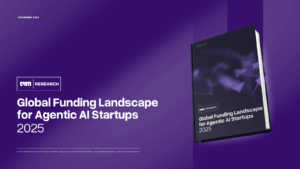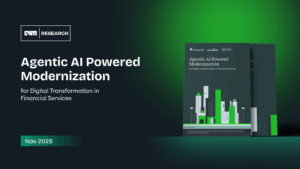In the ever-evolving landscape of artificial intelligence (AI), one remarkable phenomenon has caught the attention of researchers and industry experts alike: the convergence of scalable generative AI. This potent combination of cutting-edge computational tools, creative frameworks, and problem-solving strategies has opened the way for ground-breaking developments across a range of fields. Scalable generative AI has revolutionized industries such as architecture, healthcare, entertainment, and more. In architecture, algorithms generate innovative building designs that optimize space utilization, energy efficiency, and aesthetics. In healthcare, AI-generated models assist in diagnosing complex medical conditions and enable efficient drug development. The entertainment industry leverages AI algorithms to create life like virtual characters, music, and artwork, pushing the boundaries of creative expression. From finance to cybersecurity, scalable generative AI has transformative applications across diverse sectors, unlocking new possibilities and reshaping traditional processes.
To give us more insights on this we had an exclusive roundtable discussion with all the senior leaders in the industry. The panelists for the session were Rajendar RB, Managing Director – Analytics and Information Management, Head of Citi Solutions Center, at Citi, Padmashree Shagrithaya, EVP & MD – Insights & Data GBL at Capgemini, Anupam Gupta, Vice President – Enterprise Data and Analytics at Optum, Ankush Sabharwal, Founder & CEO at CoRover and Purnesh Gali, Cofounder and CEO at Actalyst.
The Emergence of Scalable Generative AI
The few factors which are driving growth are mostly access to data across different industries. Along with the processing power of the machines to a large extent. As the data grows, the quality of the data helps a lot. Accessibility of this data helps a lot. But there are a lot of other things where the demand from the industry will drive the growth to a large extent. The internal constraints might be the bottleneck for growth sometimes because the privacy of data is something we need to focus on, and anything which can change that. Most importantly how do we govern the data and how do we make sure that we are abiding by the regulations. Because in a very regulated area, privacy is a large issue. And if we can come across those, there is no stopping for growth. Any bias which is introduced because of AI in the decision making process, needs to be focused on. So if we can come up with things where these are taken care of, we can actually grow much, much faster.
- Rajendar RB, Managing Director – Analytics and Information Management, Head of Citi Solutions Center, at Citi
Exploring the Impact of Problem Areas and Regions on Generative AI
Generative AI has not really solved anything as of yet. It’s a tool, it’s a capability that’s been given in the hands of developers and people alike. But if you ask me, has it really solved anything as of now? I don’t think so. We are still trying to figure out what it can solve? Where can it have a transformative effect? Has it had that effect yet? No. There’s a lot of things that need to be solved before that. The most important thing has been user experience. The most impressive thing is, just the way in which it feels like you’re talking to an actual human. In my mind in terms of improving user experience, even if you don’t think about complicated application areas, say in the area of disease detection or diagnostics, that comes much later and that will have its own challenges in terms of regulation and guidelines. But something which is very simple, which will not have as many regulatory challenges is just how people interact with you as a company. That is right there and that will be the first space that will get disrupted because of generative AI.
- Anupam Gupta, Vice President – Enterprise Data and Analytics at Optum
The Potential of Untapped Regions in Generative AI
I had never estimated or projected that generative AI would be as cool as we see now. But I believe it was digital first and mobile first, and then AI first, but soon it’s going to be conversational AI first, and conversational AI chat bot is going to be there as an interface for any product. I personally never believe we would have automated answers. We’ll do a good job in trying to understand the intent and entities, but we would never do automated. But that’s totally changed. All big companies in India have got the budget. At least 50 lakhs to one crore in Indian context to do something about ChatGPT. So big use cases with video go through regulation more than we do. But there is a huge opportunity for the existing players in the market for the new experience to do anything about Generative AI. It’s not even 1% of the potential of what people have perceived or realized and now there is a huge opportunity for everyone.
- Ankush Sabharwal, Co-founder and CEO at CoRover
Collaborative Ventures in Generative AI
A large part of the use cases that we see at this point in time and the work that we are already working on are in the space of customer front ending use cases. Our case studies lie largely in that pocket, which means bots, marketing space big time in terms of looking at and generating for large product organizations, which have multiple product SKUs etc. There’s a lot more happening in that space. So social media to recommendations, to the product group, customer interactions and to the marketing team, we see a lot more. Use cases that are happening even in terms of, RFP responses have now gotten very innovative in that sense with how do you generate meaningful insights from our own work that we have done. We use that space, for the clients in the marketing space, generating from word to images. So generative AI largely now whilst we are looking at the LLMs, but there are other genes as well. There is a huge amount of imagination and creativity involved. Even if you use it as a creativity, the connotation keeps changing. So at one point in time, the creativity was to look at basic solutions to the business problems. Now you have so many tools, so how do you creatively use it in a form that can be absolutely sharper as we move forward. Creativity is not going anywhere. The perspective or the way we use things is going to change. Whatever we come up with in terms of automation or technology is only going to create more jobs and more creativity and more things.
- Padmashree Shagrithaya, EVP & MD – Insights & Data GBL at Capgemini
Future Scalability Challenges in Generative AI
Explainability comes first. At this point in time, a lot of it is deep learning based. The source of the data is so large. Large language models are leveraging the entire internet. Because it’s a deep learning based implementation, the explainability aspect of it is always going to be difficult. In the near term, I see that to be a hurdle, but not in the long term. Because eventually, purely from a large language model perspective, these implementations will become extremely customized to certain industries or certain areas. Like ChatGPT for banking or for clinical or for healthcare or a large language model that is just an expert in legal or Indian law or American law. And it’s at that point in time, the likelihood of it giving erroneous information is going to be much lesser because it’s going to be far more narrow than what it is right now. And we’ll be able to control much more of the input that’s going into it, which will eventually then generate an output.
- Anupam Gupta, Vice President – Enterprise Data and Analytics at Optum
The Vision of Generative AI
In India, a lot of money has been spent and committees have been created. And even though there’s a global committee, called GPAI, Global Partnership on Artificial Intelligence, which is all about human centric and responsible use of data and the use of AI. The future of AI, everything would be automated. Earlier, it was just the mundane and more of physical work. Any intelligence, data, logic, soon will be done by AI. I have no doubt that jobs would be lost. But jobs probably would be displaced and have more opportunities. And people are smart enough. They are adapting themselves with the new technology and it would get replaced. But when it comes to emotion I’m not yet sure. It will take a lot of time, but I have doubts. I would not say it’s impossible because all emotional attributes can also be understood, probably from the kind of smart people who can still do that. But maybe AI may take time doing that.
- Ankush Sabharwal, Co-founder and CEO at CoRover
A lot of investments will go in. How the decisions are made will change to a large extent, how we are running some of the functions will change because we look for what is the personalization for the customers that we can do. We have more data about our customers. And to a large extent, things which were not connected get connected much faster. Missions are missions, but we have lives and we have a lot of things which we can add. Creativity will go up and a lot of innovation will happen.
- Rajendar RB, Managing Director – Analytics and Information Management, Head of Citi Solutions Center, at Citi
Any new technology breakthrough helps the under served more than the well served. With the iPhone and Internet, it helped someone in a remote village in UP or Tamil Nadu more than people like us. The way it revolutionized, the same analogy applies to the cloud as well. Earlier large computing infrastructure and these supercomputers were available only to large enterprises who could invest millions of dollars. But now any startup with just a credit card and one dollar can access the same level of compute. I believe generative AI will also do the same. All of that we knew has been a challenge and it will definitely help them. However, I believe the companies that have been hesitant or reluctant, especially in the B2B side or maybe companies on the manufacturing side, companies that are very small, like SMEs, who have been apprehensive to invest in AI. Suddenly they have access to such powerful tools at ridiculous prices. It’s unimaginable how OpenAI prices their API to use. This will again help the industries that have been on the sidelines of this entire AI journey bring all of them into the code so that it’s at least a level playing field. It will give them a lot of tools and problems.
- Purnesh Gali, Cofounder and CEO at Actalyst
This article is written by a member of the AIM Leaders Council. AIM Leaders Council is an invitation-only forum of senior executives in the Data Science and Analytics industry. To check if you are eligible for a membership, please fill out the form here.






